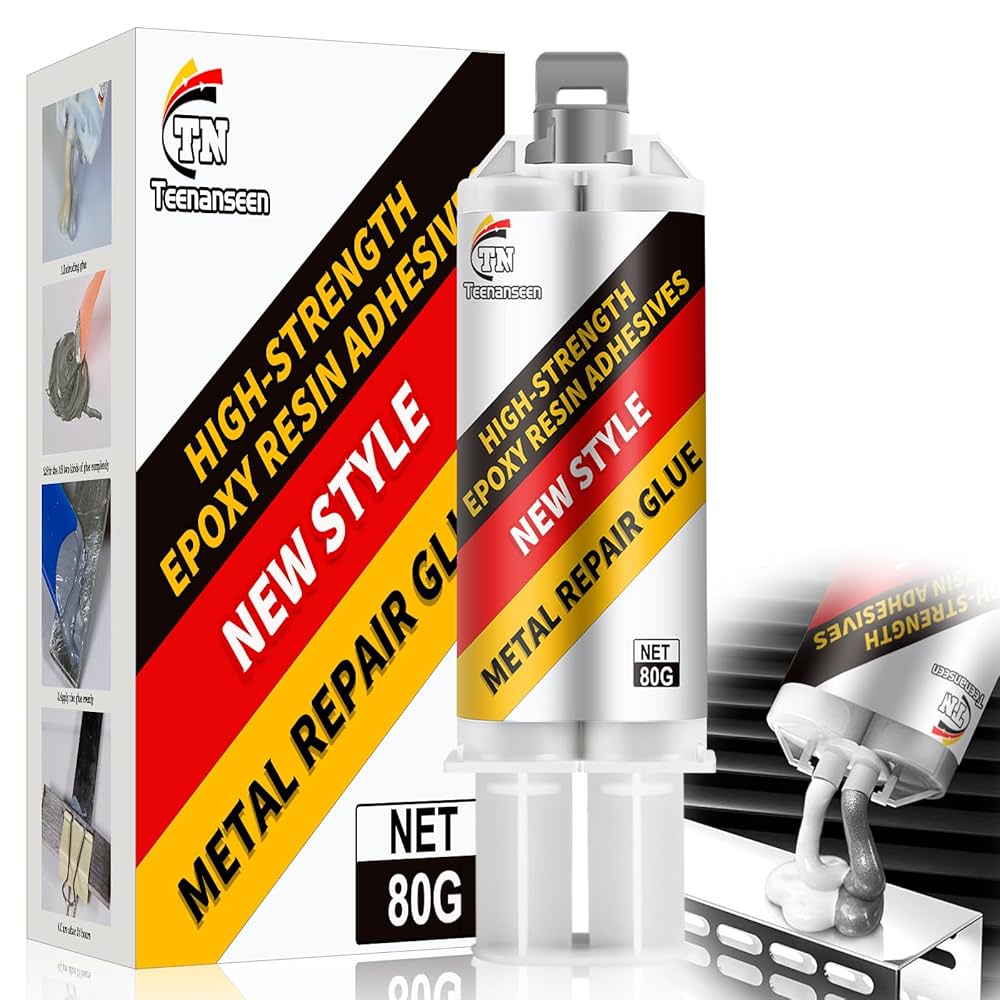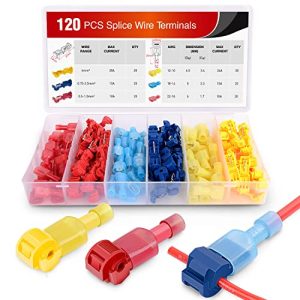Are you struggling to find the best way to bond metal surfaces together? Whether you’re tackling a DIY project or working on an industrial application, choosing the right adhesive can make all the difference.
Imagine the frustration of a metal joint failing at a crucial moment. You want a solution that’s reliable, strong, and easy to use. The good news is, there are adhesives specially designed for metal-to-metal applications that can give you the peace of mind you need.
We’ll explore the top adhesives for metal bonding, ensuring your projects hold up under pressure. Keep reading to discover the adhesive that will transform your metal bonding tasks from troublesome to trouble-free.
Types Of Metal Adhesives
Choosing the right adhesive for metal to metal bonding can make all the difference in your project’s strength and durability. Each type of adhesive offers unique benefits depending on the metals involved, environmental conditions, and load requirements. Understanding these options helps you pick the perfect fit for your specific needs.
Epoxy Adhesives
Epoxy adhesives are known for their exceptional strength and durability. They bond well with most metals and can fill gaps, making them ideal for uneven surfaces. If you need a long-lasting hold that resists heat and chemicals, epoxy might be your best choice.
Acrylic Adhesives
Acrylic adhesives cure quickly and offer strong, flexible bonds. They work well on oily or dirty metal surfaces, which saves you time on preparation. Have you ever struggled with surface cleaning? Acrylic adhesives can help you skip that step.
Polyurethane Adhesives
Polyurethane adhesives provide excellent flexibility and impact resistance. They are perfect if your metal joints will face vibrations or movement. Plus, their moisture resistance adds an extra layer of protection in outdoor applications.
Anaerobic Adhesives
Anaerobic adhesives cure in the absence of air, making them great for close-fitting metal parts. They lock threads and prevent loosening caused by vibrations. If you’re working on machinery or automotive parts, these adhesives can keep everything securely in place.
Silicone Adhesives
Silicone adhesives offer superb flexibility and temperature resistance. While they may not be the strongest for structural bonds, they excel in sealing and insulating metal surfaces. Consider silicone if your project involves exposure to extreme temperatures or requires waterproofing.
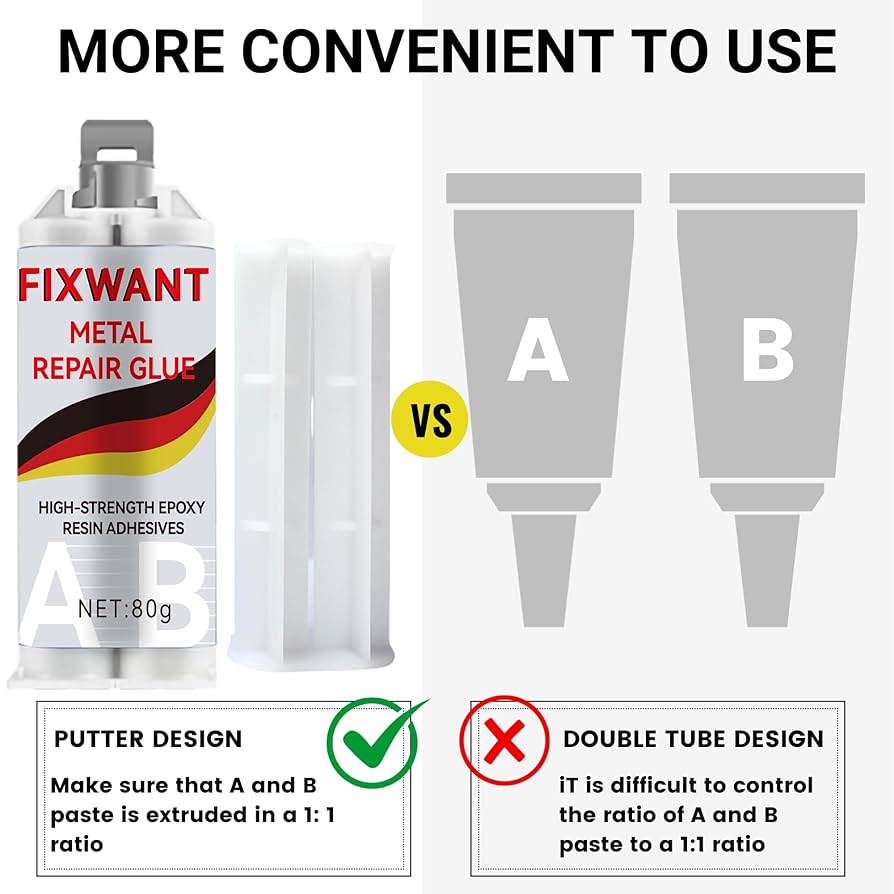
Credit: www.amazon.com
Factors Affecting Bond Strength
Bond strength in metal-to-metal adhesives depends on many key factors. These factors affect how well the adhesive sticks and holds under various conditions. Knowing them helps in choosing the right adhesive and preparing surfaces properly. It also aids in setting curing conditions and predicting performance under stress and temperature changes.
Surface Preparation
Clean, dry surfaces improve adhesive bonding. Remove dirt, oil, rust, and old paint before applying adhesive. Roughening metal surfaces increases grip by creating more contact area. Use sanding, grinding, or chemical etching for best results. Proper preparation prevents bond failure and ensures a strong hold.
Curing Time And Conditions
Adhesives need time to fully cure and develop strength. Follow manufacturer’s recommended curing time for best results. Temperature and humidity during curing affect how adhesive hardens. Too cold or too hot conditions can weaken the bond. Controlled curing ensures optimal adhesion and durability.
Temperature Resistance
Metals expand and contract with temperature changes. Adhesives must tolerate these shifts without losing strength. Some adhesives resist heat better and keep bonds intact at high temperatures. Low temperature resistance can cause brittleness and cracking. Choose adhesives that match the metal’s operating temperature range.
Load And Stress Types
Bonds face different forces like tension, shear, and peel stresses. Some adhesives handle shear stress well but fail under peel or impact. Understanding the type of load helps select the right adhesive. Proper adhesive choice ensures lasting performance under expected stresses and prevents joint failure.
Surface Preparation Techniques
Proper surface preparation is vital for strong metal-to-metal adhesion. It removes dirt, oils, and oxides that block adhesive bonding. Clean and rough surfaces create better grip for adhesives. Different techniques suit various metals and conditions.
Cleaning Methods
Cleaning removes grease, oil, dust, and rust. Use solvents like acetone or alcohol for light cleaning. For tougher grime, detergents or alkaline cleaners work well. Rinse metal surfaces with water and dry thoroughly. Proper cleaning prevents weak bonds and failures.
Mechanical Abrasion
Mechanical abrasion roughens metal surfaces to improve adhesion. Sanding with fine-grit sandpaper removes oxides and creates texture. Wire brushing or grinding can also increase surface area. Abrasion helps adhesives stick better by boosting physical contact.
Chemical Treatments
Chemical treatments modify metal surfaces for stronger bonding. Acid etching removes oxide layers and cleans deep crevices. Phosphating creates a porous surface that holds adhesives well. Choose chemicals compatible with the metal type and adhesive used.
Primers And Promoters
Primers enhance adhesion by creating a sticky layer on metal surfaces. They improve bonding strength and durability. Promoters are special coatings that prepare difficult metals like aluminum. Apply primers evenly and allow drying before adhesive application.
Application Tips For Strong Bonds
Creating a strong bond between metal surfaces requires more than just applying adhesive. Proper preparation and technique help ensure lasting adhesion and avoid common failures. Following key tips improves the strength and durability of metal-to-metal joints.
Adhesive Selection
Choose an adhesive made for metal bonding. Epoxy and polyurethane types work well for most metals. Consider the environment, such as heat or moisture exposure. Some adhesives handle temperature changes better than others. Check the adhesive’s cure time and strength ratings.
Proper Mixing And Application
Mix adhesives exactly as the instructions say. Uneven mixing weakens the bond. Apply a thin, even layer to both metal surfaces. Avoid excess glue that can squeeze out or create gaps. Use clean tools and wear gloves to prevent contamination.
Clamping And Pressure
Hold the metal pieces tightly together during curing. Clamps or weights keep surfaces in full contact. Too little pressure lets air pockets form. Too much pressure can squeeze out adhesive. Aim for firm, even pressure across the joint.
Curing Best Practices
Allow the adhesive to cure fully before stressing the bond. Follow recommended cure times and conditions. Keep bonded parts in a stable temperature and humidity. Avoid moving or loading the joint early. Patience during curing leads to stronger results.
Common Challenges And Solutions
Adhesives for metal to metal bonding face unique challenges that can affect the strength and durability of the joint. Understanding these issues helps you choose the right approach and avoid costly mistakes. Let’s look at common hurdles and practical solutions to keep your metal bonds strong.
Dealing With Contaminants
Contaminants like oil, grease, rust, and dirt can weaken adhesive bonds by preventing proper surface contact. Cleaning the metal surfaces thoroughly before applying adhesive is essential.
Use solvents such as isopropyl alcohol or acetone to remove oils and residues. Abrading the surface with sandpaper or a wire brush helps remove rust and creates a rough texture that improves adhesion.
Have you checked your metal parts for hidden contaminants lately? Skipping this step is often the reason for bond failure.
Bonding Dissimilar Metals
Metals like aluminum and steel react differently to adhesives due to their distinct surface energies and expansion rates. This difference can cause stress and eventual bond failure.
Choosing flexible adhesives like epoxy or polyurethane can absorb some of the movement between metals. Primer application may also enhance adhesion on tricky surfaces.
Think about the metals you’re joining: are their properties compatible with your chosen adhesive? Testing small samples before full application saves time and resources.
Handling Environmental Stress
Temperature changes, moisture, and chemicals can degrade adhesive bonds over time. Metals expand and contract with temperature, stressing the adhesive layer.
Select adhesives rated for the environment your project faces. Silicone-based adhesives resist moisture and temperature swings well, while specialized epoxies handle chemical exposure.
Are your bonded parts exposed to harsh conditions? Planning for these factors upfront ensures long-lasting performance.
Repairing Failed Bonds
When metal-to-metal bonds fail, the first step is identifying the cause—whether it’s contamination, improper adhesive choice, or environmental factors.
Clean off the old adhesive completely and prepare the surface again before reapplying a suitable adhesive. Sometimes switching to a stronger or more flexible adhesive is necessary.
Don’t overlook the importance of curing time and conditions during repair. Rushing this process can lead to repeated failures.
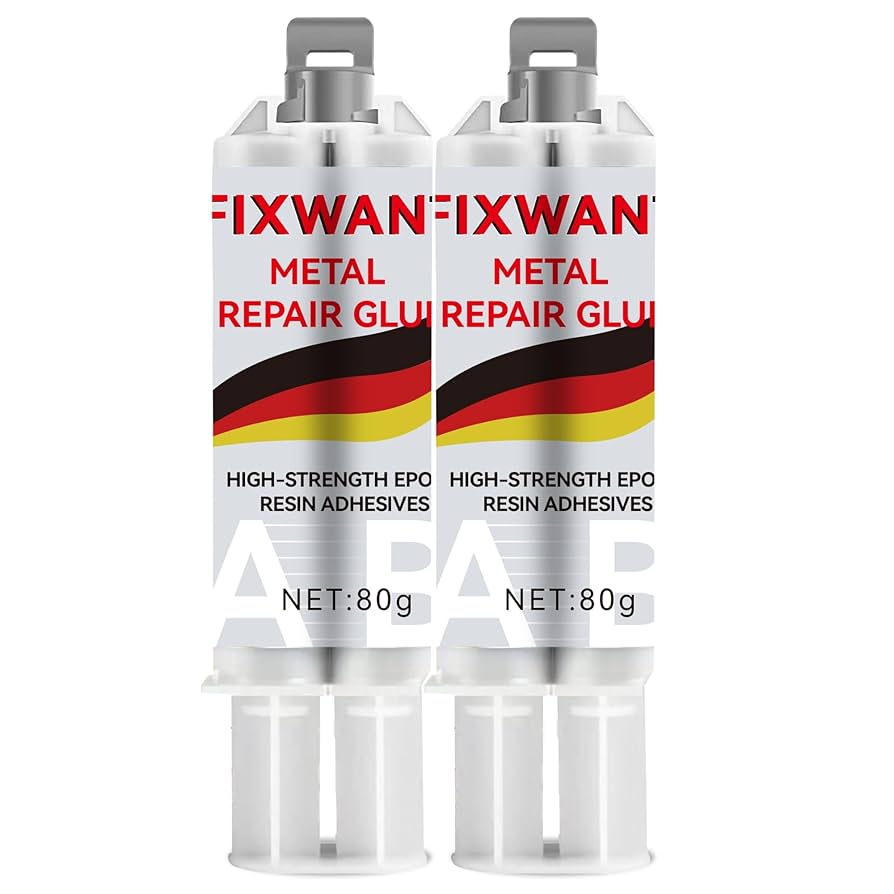
Credit: www.amazon.com
Safety And Handling Guidelines
Handling adhesives for metal to metal bonding demands careful attention to safety. These substances can contain chemicals that irritate your skin, eyes, or lungs. Knowing how to protect yourself and manage your workspace can prevent accidents and long-term health issues.
Personal Protective Equipment
Always wear gloves made of nitrile or neoprene to shield your skin from direct contact. Safety goggles are essential to protect your eyes from splashes or fumes.
A respirator mask might be necessary if you’re working with strong adhesives in a poorly ventilated area. Have a first aid kit nearby in case of accidental exposure.
Ventilation And Workspace Setup
Set up your workspace near an open window or use an exhaust fan to ensure fresh air circulation. Poor ventilation can trap harmful fumes, increasing the risk of dizziness or respiratory problems.
Keep your work area clean and organized to avoid spills. Use disposable mats or trays to catch drips and make cleanup easier.
Storage And Disposal
Store adhesives in a cool, dry place away from direct sunlight and heat sources. Make sure containers are tightly sealed to prevent leaks and evaporation.
Dispose of leftover adhesive and empty containers according to local hazardous waste guidelines. Never pour adhesives down the drain or throw them in regular trash bins.
Industrial And Diy Applications
Adhesives for metal to metal bonding play a crucial role in both industrial settings and DIY projects. They offer a reliable way to join metals without welding or mechanical fasteners, saving time and effort. Whether you’re working on a large-scale manufacturing line or fixing something at home, knowing where and how to use these adhesives can make a big difference.
Automotive Uses
In the automotive world, metal-to-metal adhesives help attach parts like exhaust systems, body panels, and engine components. These adhesives must withstand high temperatures and vibrations, making strength and durability essential. Have you ever wondered how your car maintains its structure without too many visible screws or welds? Adhesives are often the hidden heroes.
Construction And Fabrication
Builders and fabricators rely on metal adhesives to bond steel beams, metal frames, and other structural elements. Adhesives can reduce the need for drilling or welding, speeding up assembly and improving aesthetics by eliminating bulky fasteners. If you’re involved in a project with tight spaces or delicate metals, adhesives might offer a cleaner and safer solution.
Electronics Assembly
Metal adhesives are vital in electronics to join tiny metal parts without damaging sensitive components. They provide electrical conductivity and heat resistance where soldering isn’t practical. Have you noticed how compact and durable your gadgets are? Adhesives help keep those internal metal parts firmly connected without adding weight.
Home Repairs
For everyday repairs, metal adhesives offer an easy fix for broken tools, appliances, and metal furniture. They allow you to avoid trips to the hardware store for replacement parts. Next time you face a loose hinge or a cracked metal frame, consider an adhesive—it can save you both time and money.
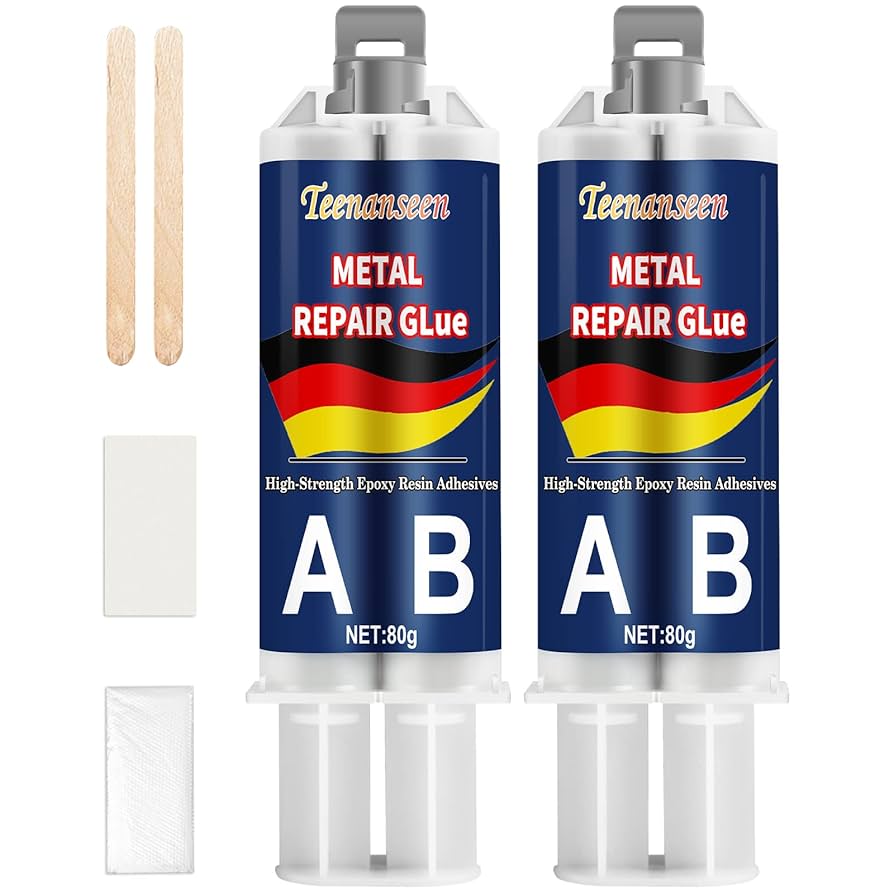
Credit: www.amazon.com
Frequently Asked Questions
What Types Of Adhesives Work Best For Metal To Metal Bonding?
Epoxy and polyurethane adhesives provide strong, durable metal to metal bonds. They resist heat, chemicals, and vibrations effectively. Cyanoacrylate adhesives are suitable for quick, light-duty bonding. Choosing the right adhesive depends on metal types and application requirements.
How To Prepare Metal Surfaces Before Applying Adhesive?
Clean metal surfaces with a degreaser to remove oils and dirt. Lightly abrade the surface to increase adhesion. Wipe off dust and ensure the surface is dry. Proper preparation improves adhesive strength and durability.
Can Adhesives Replace Welding For Metal Joints?
Adhesives can replace welding in many applications, especially where heat damage is a concern. They provide flexibility, reduce stress, and allow bonding dissimilar metals. However, welds offer higher mechanical strength for heavy-duty uses.
How Long Does Metal To Metal Adhesive Curing Take?
Curing times vary by adhesive type and environmental conditions. Epoxies typically cure in 24 hours, while cyanoacrylates set within minutes. Full strength may take longer, so follow manufacturer instructions for optimal results.
Conclusion
Choosing the right adhesive for metal to metal bonding is key. Strong bonds last longer and resist wear. Clean surfaces help adhesives stick better. Different adhesives suit different metals and uses. Test small areas before full application. Proper drying time ensures a firm hold.
Safe handling protects you and your project. Good adhesives make metal work easier and neater. Keep these tips in mind for your next metal project. Quality bonding saves time and effort.


